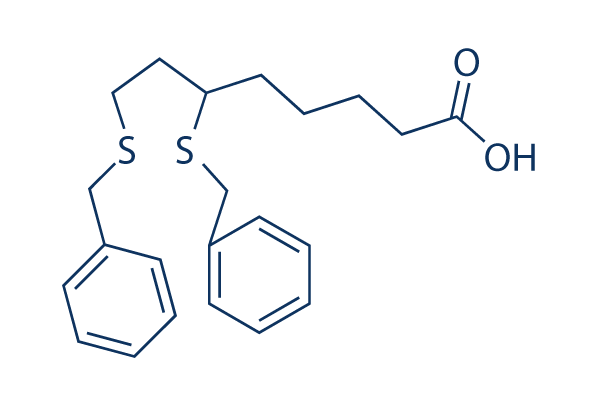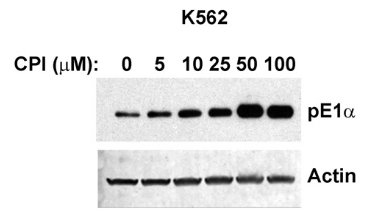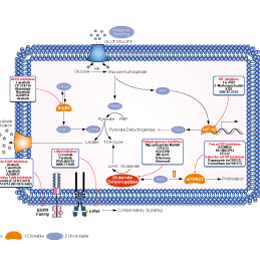
- Bioactive Compounds
- By Signaling Pathways
- PI3K/Akt/mTOR
- Epigenetics
- Methylation
- Immunology & Inflammation
- Protein Tyrosine Kinase
- Angiogenesis
- Apoptosis
- Autophagy
- ER stress & UPR
- JAK/STAT
- MAPK
- Cytoskeletal Signaling
- Cell Cycle
- TGF-beta/Smad
- DNA Damage/DNA Repair
- Compound Libraries
- Popular Compound Libraries
- Customize Library
- Clinical and FDA-approved Related
- Bioactive Compound Libraries
- Inhibitor Related
- Natural Product Related
- Metabolism Related
- Cell Death Related
- By Signaling Pathway
- By Disease
- Anti-infection and Antiviral Related
- Neuronal and Immunology Related
- Fragment and Covalent Related
- FDA-approved Drug Library
- FDA-approved & Passed Phase I Drug Library
- Preclinical/Clinical Compound Library
- Bioactive Compound Library-I
- Bioactive Compound Library-Ⅱ
- Kinase Inhibitor Library
- Express-Pick Library
- Natural Product Library
- Human Endogenous Metabolite Compound Library
- Alkaloid Compound LibraryNew
- Angiogenesis Related compound Library
- Anti-Aging Compound Library
- Anti-alzheimer Disease Compound Library
- Antibiotics compound Library
- Anti-cancer Compound Library
- Anti-cancer Compound Library-Ⅱ
- Anti-cancer Metabolism Compound Library
- Anti-Cardiovascular Disease Compound Library
- Anti-diabetic Compound Library
- Anti-infection Compound Library
- Antioxidant Compound Library
- Anti-parasitic Compound Library
- Antiviral Compound Library
- Apoptosis Compound Library
- Autophagy Compound Library
- Calcium Channel Blocker LibraryNew
- Cambridge Cancer Compound Library
- Carbohydrate Metabolism Compound LibraryNew
- Cell Cycle compound library
- CNS-Penetrant Compound Library
- Covalent Inhibitor Library
- Cytokine Inhibitor LibraryNew
- Cytoskeletal Signaling Pathway Compound Library
- DNA Damage/DNA Repair compound Library
- Drug-like Compound Library
- Endoplasmic Reticulum Stress Compound Library
- Epigenetics Compound Library
- Exosome Secretion Related Compound LibraryNew
- FDA-approved Anticancer Drug LibraryNew
- Ferroptosis Compound Library
- Flavonoid Compound Library
- Fragment Library
- Glutamine Metabolism Compound Library
- Glycolysis Compound Library
- GPCR Compound Library
- Gut Microbial Metabolite Library
- HIF-1 Signaling Pathway Compound Library
- Highly Selective Inhibitor Library
- Histone modification compound library
- HTS Library for Drug Discovery
- Human Hormone Related Compound LibraryNew
- Human Transcription Factor Compound LibraryNew
- Immunology/Inflammation Compound Library
- Inhibitor Library
- Ion Channel Ligand Library
- JAK/STAT compound library
- Lipid Metabolism Compound LibraryNew
- Macrocyclic Compound Library
- MAPK Inhibitor Library
- Medicine Food Homology Compound Library
- Metabolism Compound Library
- Methylation Compound Library
- Mouse Metabolite Compound LibraryNew
- Natural Organic Compound Library
- Neuronal Signaling Compound Library
- NF-κB Signaling Compound Library
- Nucleoside Analogue Library
- Obesity Compound Library
- Oxidative Stress Compound LibraryNew
- Plant Extract Library
- Phenotypic Screening Library
- PI3K/Akt Inhibitor Library
- Protease Inhibitor Library
- Protein-protein Interaction Inhibitor Library
- Pyroptosis Compound Library
- Small Molecule Immuno-Oncology Compound Library
- Mitochondria-Targeted Compound LibraryNew
- Stem Cell Differentiation Compound LibraryNew
- Stem Cell Signaling Compound Library
- Natural Phenol Compound LibraryNew
- Natural Terpenoid Compound LibraryNew
- TGF-beta/Smad compound library
- Traditional Chinese Medicine Library
- Tyrosine Kinase Inhibitor Library
- Ubiquitination Compound Library
-
Cherry Picking
You can personalize your library with chemicals from within Selleck's inventory. Build the right library for your research endeavors by choosing from compounds in all of our available libraries.
Please contact us at [email protected] to customize your library.
You could select:
- Antibodies
- Bioreagents
- qPCR
- 2x SYBR Green qPCR Master Mix
- 2x SYBR Green qPCR Master Mix(Low ROX)
- 2x SYBR Green qPCR Master Mix(High ROX)
- Protein Assay
- Protein A/G Magnetic Beads for IP
- Anti-Flag magnetic beads
- Anti-Flag Affinity Gel
- Anti-Myc magnetic beads
- Anti-HA magnetic beads
- Magnetic Separator
- Poly DYKDDDDK Tag Peptide lyophilized powder
- Protease Inhibitor Cocktail
- Protease Inhibitor Cocktail (EDTA-Free, 100X in DMSO)
- Phosphatase Inhibitor Cocktail (2 Tubes, 100X)
- Cell Biology
- Cell Counting Kit-8 (CCK-8)
- Animal Experiment
- Mouse Direct PCR Kit (For Genotyping)
- New Products
- Contact Us
Devimistat (CPI-613)
Devimistat (CPI-613), a lipoate analog, inhibits mitochondrial enzymes pyruvate dehydrogenase (PDH) and α-ketoglutarate dehydrogenase in NCI-H460 cell line, disrupts tumor cell mitochondrial metabolism. CPI-613 induces apoptosis in pancreatic cancer cells. Phase 2.

Devimistat (CPI-613) Chemical Structure
CAS No. 95809-78-2
Purity & Quality Control
Batch:
Purity:
99.03%
99.03
Devimistat (CPI-613) Related Products
| Related Targets | ALDH1A | Click to Expand |
|---|---|---|
| Related Products | Glycyrrhizin (NSC 167409) Gossypol Acetate Emodin AGI-5198 AGI-6780 DCA (Sodium dichloroacetate) NCT-503 Brequinar SW033291 RRx-001 Gossypol Farudodstat Orludodstat (BAY 2402234) Vidofludimus Vorasidenib (AG-881) (R)-GNE-140 Merimepodib BVT 2733 AG-120 (racemic) ML390 Alda 1 Gimeracil NCT-501 G6PDi-1 Enoxolone Brequinar Sodium Alpha-Mangostin GSK 2837808A BAY 1436032 | Click to Expand |
| Related Compound Libraries | Metabolism Compound Library Anti-cancer Metabolism Compound Library Glutamine Metabolism Compound Library Carbohydrate Metabolism Compound Library Lipid Metabolism Compound Library | Click to Expand |
Signaling Pathway
Cell Data
| Cell Lines | Assay Type | Concentration | Incubation Time | Formulation | Activity Description | PMID |
|---|---|---|---|---|---|---|
| DAOY | qHTS assay | qHTS of pediatric cancer cell lines to identify multiple opportunities for drug repurposing: Primary screen for DAOY cells | 29435139 | |||
| SK-N-MC | qHTS assay | qHTS of pediatric cancer cell lines to identify multiple opportunities for drug repurposing: Primary screen for SK-N-MC cells | 29435139 | |||
| NB1643 | qHTS assay | qHTS of pediatric cancer cell lines to identify multiple opportunities for drug repurposing: Primary screen for NB1643 cells | 29435139 | |||
| RD | qHTS assay | qHTS of pediatric cancer cell lines to identify multiple opportunities for drug repurposing: Primary screen for RD cells | 29435139 | |||
| Click to View More Cell Line Experimental Data | ||||||
Biological Activity
| Description | Devimistat (CPI-613), a lipoate analog, inhibits mitochondrial enzymes pyruvate dehydrogenase (PDH) and α-ketoglutarate dehydrogenase in NCI-H460 cell line, disrupts tumor cell mitochondrial metabolism. CPI-613 induces apoptosis in pancreatic cancer cells. Phase 2. | ||
|---|---|---|---|
| Targets |
|
| In vitro | ||||
| In vitro | In vitro, CPI-613 produces the selective toxicity against several tumor cell lines including H460 human lung cancer cells and Saos-2 human sarcoma cells with EC50 of 120 μM and 120 μM, respectively. CPI-613 disrupts H460 cancer cell mitochondrial metabolism including inhibition of PDH complex activity and loss of mitochondrial membrane potential in a time- and drug dose-dependent fashion. In addition, CPI-613 (240 μM) also induces both apoptotic and non-apoptotic cell death in H460 human lung cancer and Saos-2 human sarcoma cells. [1] |
|||
|---|---|---|---|---|
| Kinase Assay | E1α phosphorylation | |||
| Cells are seeded and grown overnight. Five dishes per test group are treated with CPI-613or solven. Cells are lysed in situ with 150 μL lysis buffer A [455 μL Zoom 2D protein solubilizer 1, 2.5μL 1M Tris base, 5μL 100X protease inhibitor cocktail; 5μL 2M DTT] and lysates from all five dishes are pooled in a 1.5 mL microfuge tube and sonicated on ice for 15 passes at 50% power. After a 10-minute incubation at room temperature, 2.5μL of dimethylacrylamide (DMA) are added and lysates are incubated for an additional 10 minutes. 5μL of 2 M DTT are added to neutralize excess DMA. Lysates are centrifuged for 15 minutes and the supernatant is recovered. Then, 40μL of lysate are mixed with 0.8μL pH 3-10 ampholytes, 0.75 μL 2 M DTT and brought up to 150μL with Zoom 2D protein solubilizer 1. 150μL of sample is loaded into IPG runner, and pH 3-10NL IPG strips are added. Strips are soaked overnight at room temperature. A step protocol is used for isoelectric focusing (250V, 20min.; 450V 15min; 750 V 15 min 2000V 30 minutes). For the second dimension, strips are treated for 15 minutes in 1X loading buffer, followed by 15 minutes in 1X loading buffer plus 160 mM iodoacetatic acid. Strips are electrophoresed on NuPAGE 4-12% Bis Tris ZOOM gels. Proteins are blotted onto PVDF 4.5μm membranes. Serines 232, 293 and 300 are targets of the three well-characterized PDK phosphorylation events controlling E1 activity. Equal amounts of protein from treated and mock-treated cells are loaded on gels and western transfers are probed with anti-E1α Ab as an internal matching control or one of the three anti-phospho-E1α Abs. | ||||
| Cell Research | Cell lines | HN6 cells | ||
| Concentrations | 100 μM | |||
| Incubation Time | 24 h | |||
| Method | Cells were treated with or without 100 μM CPI-613 for 24 h. |
|||
| Experimental Result Images | Methods | Biomarkers | Images | PMID |
| Western blot | pE1α p-AMPK / AMPK |

|
25165100 | |
| In Vivo | ||
| In vivo | CPI-613 (25 mg/kg) has potent anticancer activity in a human tumor xenograft model of of a pancreatic tumor cell (BxPC-3). Similarly, CPI-613 (10 mg/kg) also produces significant tumor growth inhibition of H460 human non-small cell lung carcinoma in mouse model. Besides, CPI-613 produces little or no side-effect toxicity in expected therapeutic dose ranges in large animal models and has the maximum tolerated dose of 100 mg/kg in mice. [1] |
|
|---|---|---|
| Animal Research | Animal Models | BxPC-3 and H460 cells are injected s.c. into the dorsal flank of CD1 nu/nu mice. |
| Dosages | ≤25 mg/kg | |
| Administration | Administered via i.p. | |
| NCT Number | Recruitment | Conditions | Sponsor/Collaborators | Start Date | Phases |
|---|---|---|---|---|---|
| NCT05926206 | Withdrawn | Metastatic Pancreatic Adenocarcinoma |
University of Michigan Rogel Cancer Center |
July 2023 | Phase 1|Phase 2 |
| NCT03793140 | Active not recruiting | Lymphoma|Leukemia |
Memorial Sloan Kettering Cancer Center|City of Hope Medical Center|Massachusetts General Hospital|M.D. Anderson Cancer Center|George Washington University |
December 31 2018 | Phase 2 |
Chemical Information & Solubility
| Molecular Weight | 388.59 | Formula | C22H28O2S2 |
| CAS No. | 95809-78-2 | SDF | Download Devimistat (CPI-613) SDF |
| Smiles | C1=CC=C(C=C1)CSCCC(CCCCC(=O)O)SCC2=CC=CC=C2 | ||
| Storage (From the date of receipt) | |||
|
In vitro |
DMSO : 77 mg/mL ( (198.15 mM) Moisture-absorbing DMSO reduces solubility. Please use fresh DMSO.) Ethanol : 77 mg/mL Water : Insoluble |
Molecular Weight Calculator |
|
In vivo Add solvents to the product individually and in order. |
In vivo Formulation Calculator |
||||
Preparing Stock Solutions
Molarity Calculator
In vivo Formulation Calculator (Clear solution)
Step 1: Enter information below (Recommended: An additional animal making an allowance for loss during the experiment)
mg/kg
g
μL
Step 2: Enter the in vivo formulation (This is only the calculator, not formulation. Please contact us first if there is no in vivo formulation at the solubility Section.)
% DMSO
%
% Tween 80
% ddH2O
%DMSO
%
Calculation results:
Working concentration: mg/ml;
Method for preparing DMSO master liquid: mg drug pre-dissolved in μL DMSO ( Master liquid concentration mg/mL, Please contact us first if the concentration exceeds the DMSO solubility of the batch of drug. )
Method for preparing in vivo formulation: Take μL DMSO master liquid, next addμL PEG300, mix and clarify, next addμL Tween 80, mix and clarify, next add μL ddH2O, mix and clarify.
Method for preparing in vivo formulation: Take μL DMSO master liquid, next add μL Corn oil, mix and clarify.
Note: 1. Please make sure the liquid is clear before adding the next solvent.
2. Be sure to add the solvent(s) in order. You must ensure that the solution obtained, in the previous addition, is a clear solution before proceeding to add the next solvent. Physical methods such
as vortex, ultrasound or hot water bath can be used to aid dissolving.
Tech Support
Answers to questions you may have can be found in the inhibitor handling instructions. Topics include how to prepare stock solutions, how to store inhibitors, and issues that need special attention for cell-based assays and animal experiments.
Tel: +1-832-582-8158 Ext:3
If you have any other enquiries, please leave a message.
* Indicates a Required Field
Frequently Asked Questions
Question 1:
How to dissolve the compund for in vivo applications?
Answer:
CPI-613 in 1% DMSO+30% polyethylene glycol+1% Tween 80 at 30mg/ml is a suspension, and it is for oral gavage.
Tags: buy Devimistat (CPI-613) | Devimistat (CPI-613) supplier | purchase Devimistat (CPI-613) | Devimistat (CPI-613) cost | Devimistat (CPI-613) manufacturer | order Devimistat (CPI-613) | Devimistat (CPI-613) distributor







































